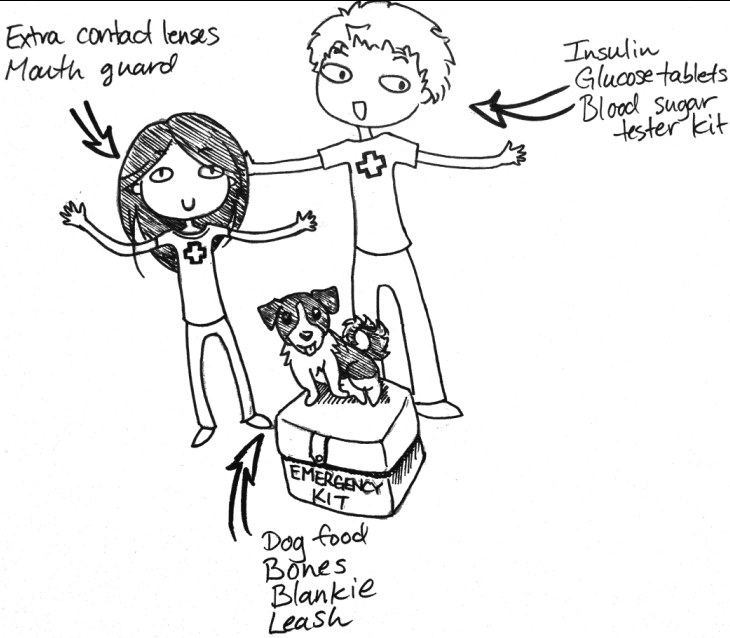It’s that time of the year again, when people are round up the “Top 10 This” or “Top 50 That” lists.
Because it’s been such a busy year, I decided to do a little round up based on some of the top preparedness tips I’ve learned throughout this year. Today, I bring you tips 1-5.
Tip #1: Know First Aid

I’m clumsy and prone to accidents. This year’s list of things requiring first aid included:
– Bee Sting
– Bacon Grease Attack
– Falling Up Stairs (that take special talent)
– And my all time repeated classic, grabbing the pot handle after it just came out of the oven.
I feel like the Red Cross knows how clumsy I am and created a wonderful little First Aid App for people like me. So, if you get a clumsy person a smart phone this holiday season, I’d highly recommend that this be the first thing you download onto it.
Tip #2: Know CPR

Let me tell you about Lauren Kornacki, she is the young woman who lifted her father’s car off of him and started performing CPR, while she yelled for her mother to dial 9-1-1 – which ultimately saved his life. Basically, she’s awesome.
Lauren is a lifeguard, who earned her CPR certification through the Red Cross. One quarter of Americans have admitted to being in a situation where someone was in need of CPR – would you be ready to jump in and save a life? Especially since the holidays tend to cause an increase in bodily stress, leading to more heart attacks. Take a class or learn “Hands Only” CPR.
Tip #3: Duck, Cover, and HOLD

Living in Sunny Southern California, I feel like I know what to do in an earthquake (if I feel it). Earlier this year, I participated in the largest California Shakeout to date – it was pretty fun and interesting to learn how others were participating in the Shakeout as well.
A few days ago, we had a 6.1 magnitude quake hit off the coast here, so it was certainly a good reminder to review DROP, COVER, and HOLD as well as review the Red Cross’ Earthquake App for tips/tricks on what to do before, during, and after a quake.
Tip #4: Have Fun Outside, But Be Ready

This may not seem like a “preparedness tip” but I was caught in two VERY different weather situations this year that left me in need of help. The first was my attempt to run a freakishly hot marathon (when it was in the 80’s and I seriously overheated), and my second was during the Nike Women’s Half Marathon (when I got unexpectedly cold and had an awesome case of mild hypothermia). What did I learn? Be aware of what the elements around are going to be, and make sure you wear appropriate clothing and know how to listen to your body so you know when things are starting to go south (also, see Tip #1).
Tip #5: Be Ready For Your Dietary/Medical Needs

Preparedness comes in many “general” forms; however, if you have any special dietary or medical needs, being prepared is even more important. My colleague, Gloria, learned this first hand when she was preparing for power outages during Hurricane Sandy. Her husband is diabetic, so they needed to make sure they had enough medication, and blood-sugar-leveling foods on hand to keep his medical condition in check for a few days. Also, I had to make sure my preparedness kit had LOTS OF SNACKS because gluten greatly upsets my stomach, and not knowing if you’re going to have easy access to foods you can comfortably digest can cause even more distress during a disaster situation. So make sure your preparedness kit is custom tailored to you!
